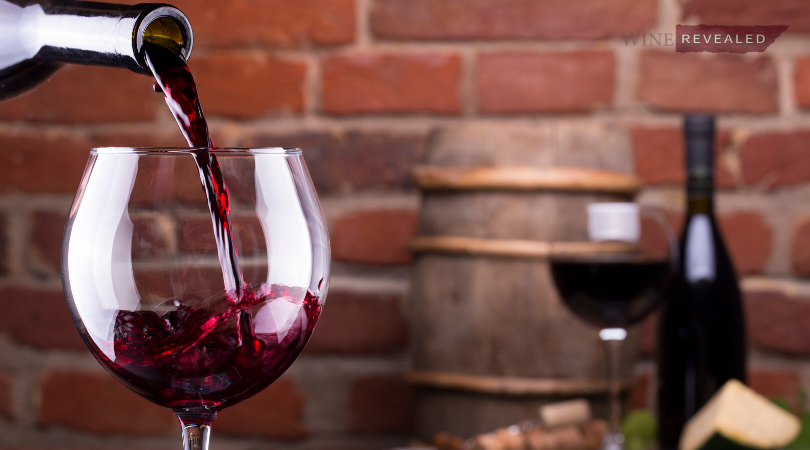On a bright, sunny summer day, the Wine Revealed crew found itself in the 12th Century fortified hilltop village of Castello di Volpaia in Tuscany, Italy. Here we met our gracious hostess, Federica Masheroni Stianti, granddaughter of the original owner of Volpaia Winery, Carlo Mascheroni.
There are less than 50 people living in the quaint hilltop village. According to records, the town goes back to 1172… but evidence suggests it is much older. The winery uses old buildings that were already here in order to preserve the charm and beauty of the town. In fact, a stainless steel pipeline was installed underground to move wine between buildings.
Volpaia means “a lot of foxes” and is the name the town has always gone by. The wine’s label reflects this history with a fox emblem on it. Federica says that there are still a lot of foxes in the area, “sometimes they steal the food to my dog.”
Volpaia is part of the Chianti Classico DOCG, or Denominazione di Origine Controllata e Garantita. This is the highest classification given to Italian wines, and guarantees that specific standards are met in the production of the wine.
The Chianti Region was established as a DOC (Denominazione di Origine Controllata) in 1967, and became a DOCG in 1984. The principle grape of the region is the deep, plum-colored Sangiovese grape.
Madeline Puckett of Wine Folly describes Sangiovese as a bit of a chameleon, “…easily altering its genetics to fit the environment. There are many different mutations of the variety all over Italy, which results in very different tasting wines.”
Volpaia produces 200-250 thousand bottles per year. Federica explains that they specialize in Chianti Classico. “A lot of people when they taste that wine, they almost don’t even realize that this is normal Chianti Classico. I can say this, sometimes they confuse it like a Brunello.”
Federica gave Wine Revealed an inside look at Volpaia’s facilities –a historical tour in part– of various buildings connected by tunnels and staircases. Their first vinification cellar is in an old church. “Is a holy wine!” Federica quips.

In the Vinsanto room, there is a strong, sweet smell in the air. Federica explains, “This is the room where we hang the grapes for the Vinsanto, the sweet wine.” These grapes are dried for a time to intensify the sweetness, and barrel-aged for 4 years.
Each cask holds the “mother,” as Francesca describes it, “the yeast of the Vinsanto that was there the year before.” This produces a sweet and fresh wine.
One important stop on the tour is the aging room, filled with large casks. This is where Volpaia ages their Chianti Classico and Chianti Classico Riserva. Classico ages here for a year, and Riserva for 2 years.
Federica shares her thought process, “When I choose grapes for my Riserva, I choose grapes that can age longer, and so it can have a much longer life in the bottle.” The Riserva can be further aged in the bottle for another 10 or more years if desired. The Chianti Classico is a younger wine, and grapes are chosen accordingly.
In 2018, Volpaia’s 2015 Riserva made #3 on Wine Spectator’s list of top 10 wines for the year. The wine is described as, “a balanced, complex red with a long, gorgeous finish. The grapes, sourced from eight different parcels, are farmed organically in the sandstone soils on the hillside below the town. They are crushed and vinified in steel tanks, then aged in a mix of Slavonian oak casks (80 percent) and French oak barriques (20 percent) for two years.”

At around $35 a bottle, wine bargains don’t get much better than this!
Federica shared the excitement of this honor with us, “I think when I received the news it was a journalist that told me was making another question. I said, you are making joke of me, it’s not nice. Stop it to make joke of me. Actually, it was the reality. So it was a lot of attention, it was amazing for us.”
She continues, “That is a 15 vintage, 15 vintage is incredible vintage, very fruitful and very ready, so it is a wine that since the beginning was showing perfectly, obviously if you age it’d be longer.”
Federica suggests opening the wine and letting it breathe for an hour. She personally prefers not to decant it, but to let it evolve in the glass and sip it as a the ambient oxygen does its magic and opens up the wine.
Wine critic Bruce Sanderson shared his tasting notes in Wine Spectator, “Though saturated with black currant and blackberry fruit and backed by opaque tannins, this red is pure and balanced. Thyme, iron, leather and tar notes give this complexity, while the finish goes into overtime. Best from 2023 through 2040.”
With such bold flavors, Federica suggests that this wine be paired with a grilled steak. It would work with many pasta dishes and many Tuscan staples. She explains, “We want the flavors that comes out….So if steak on the grill, some olive oil, salt and the glass of wine — will be wow!”
While a word like “wow” is a pithy one-word description of this savory wine pairing, the word could also apply to the Chianti Classico region as a whole. Chianti has come a very long way from the humble, stout, straw-covered bottles of past decades that served up what was little more than a table wine. Today’s Chianti Classico is elegant, refined, bold, unforgettable, and as Federica put it – “wow!”


